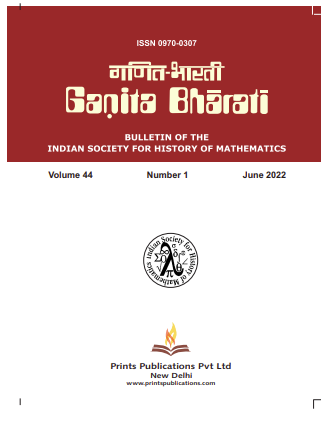Ganita Bharati
Published in Association with Bulletin of The Indian Society for History of Mathematics
Current Volume: 45 (2023 )
ISSN: 0970-0307
Periodicity: Half-Yearly
Month(s) of Publication: June & December
Subject: Mathematics
DOI: https://doi.org/10.32381/GB
Online Access is Free for Life Member
Algebraic Work with the “Heavenly Origin / Source” in China, 1st Century—13th Century
By : Karine Chemla
Page No: 121-167
Abstract
The same expression “one establishes the heavenly source/origin, one, as… li tian yuan yi wei… 立天元一為…” occurs in two types of mathematical contexts in thirteenth-century China. Qin Jiushao 秦九韶 uses it in the procedure for solving the fundamental linear congruence equation that is central to the so-called Chinese remainder theorem. Li Ye brings the expression into play in relation to the use of polynomial computations allowing him to establish the equations that solve the mathematical problems he considers. Hitherto, the expression has been considered to have different meanings in the two contexts. This article argues that the expression actually has one and the same meaning in both contexts. In order to establish this thesis, I embed the two pieces of mathematical knowledge into a broader context of an interest that some practitioners of mathematics in China had regarding procedures inverse of one another. This allows me to show that the concept of yuan “source/origin” as used by both Qin Jiushao and Li Ye has its roots in the canonical literature in mathematics The Ten Canonical Texts of Mathematics.
Author
Karine Chemla School of Mathematics, University of Edinburgh & SPHERE, CNRS and University Paris Cité.
DOI: DOI-https://doi.org/10.32381/GB.2023.45.2.1




